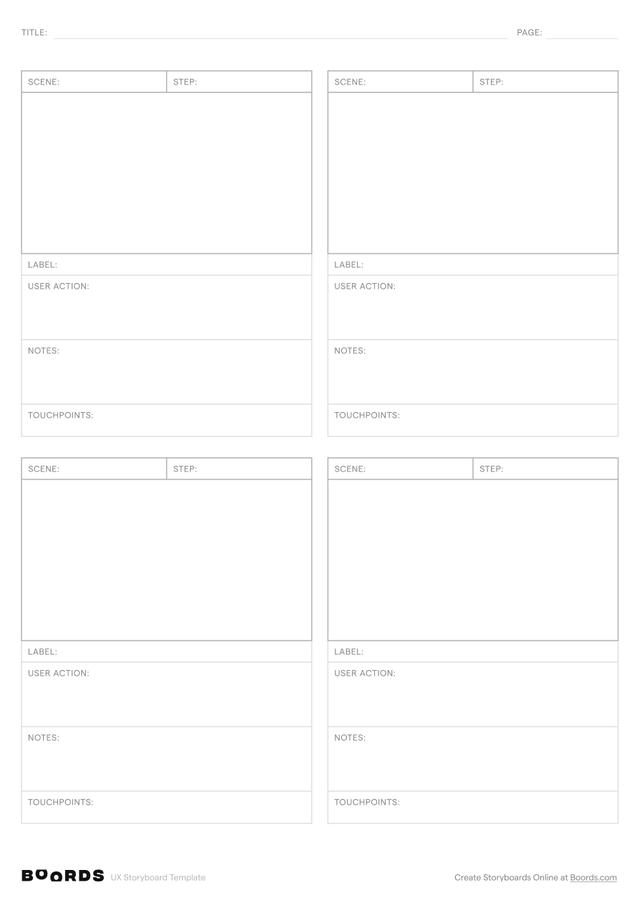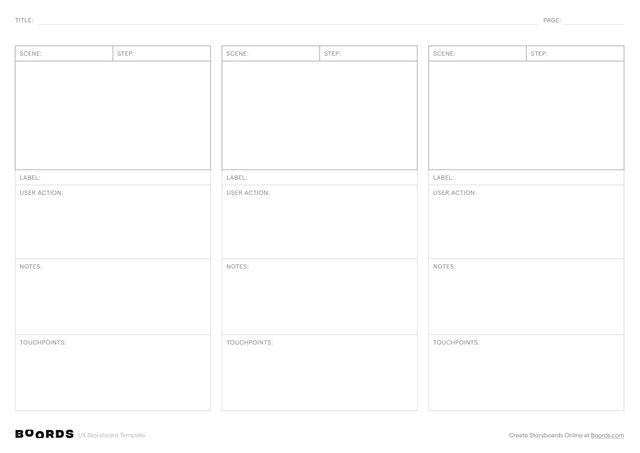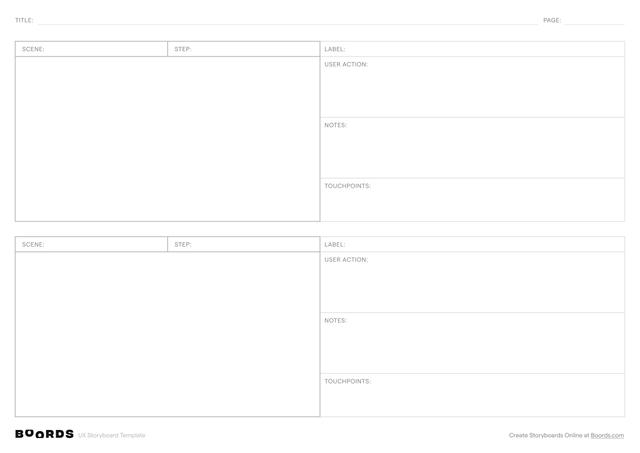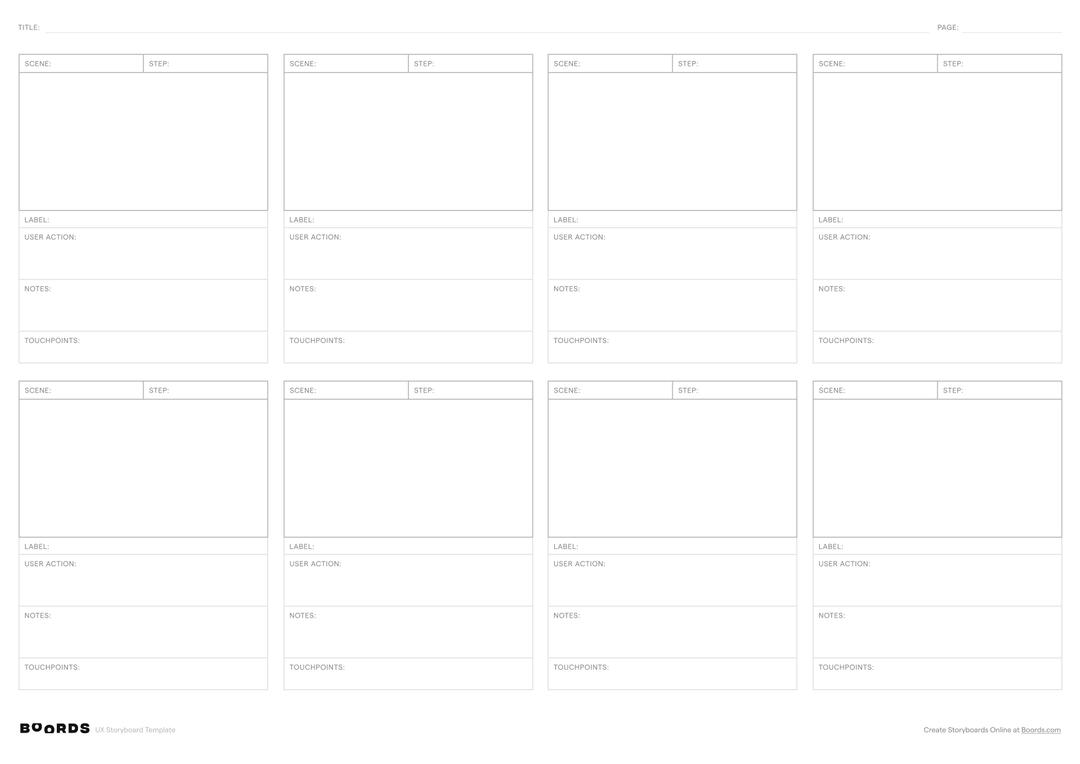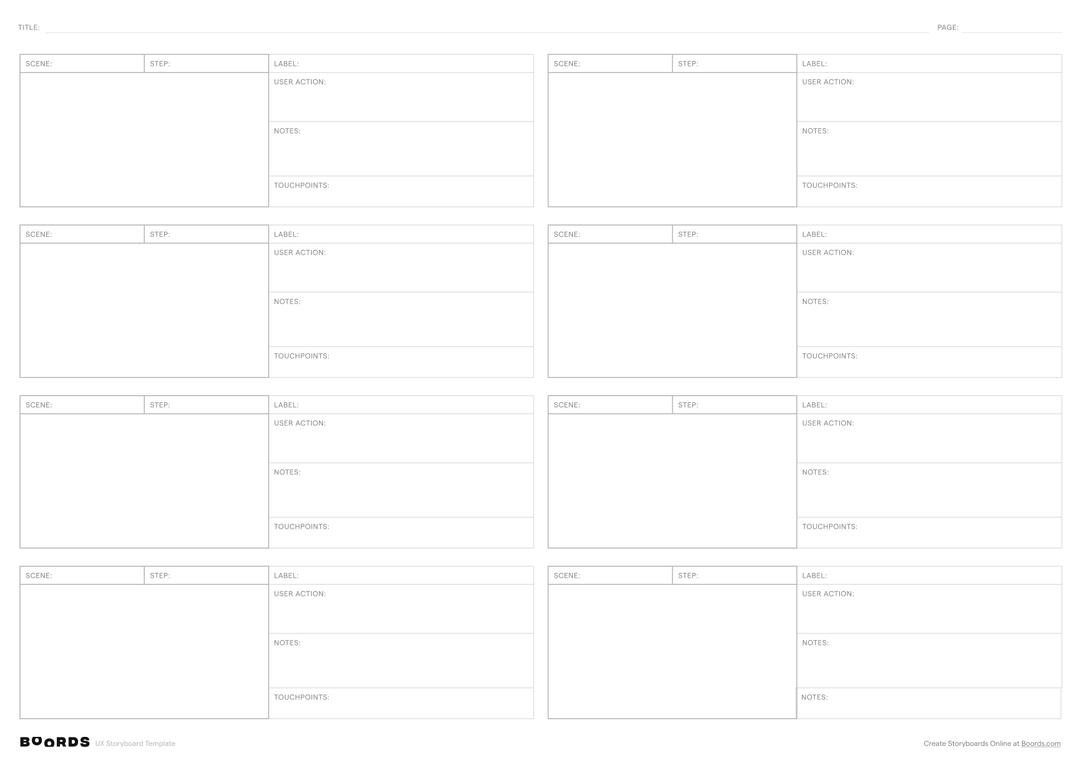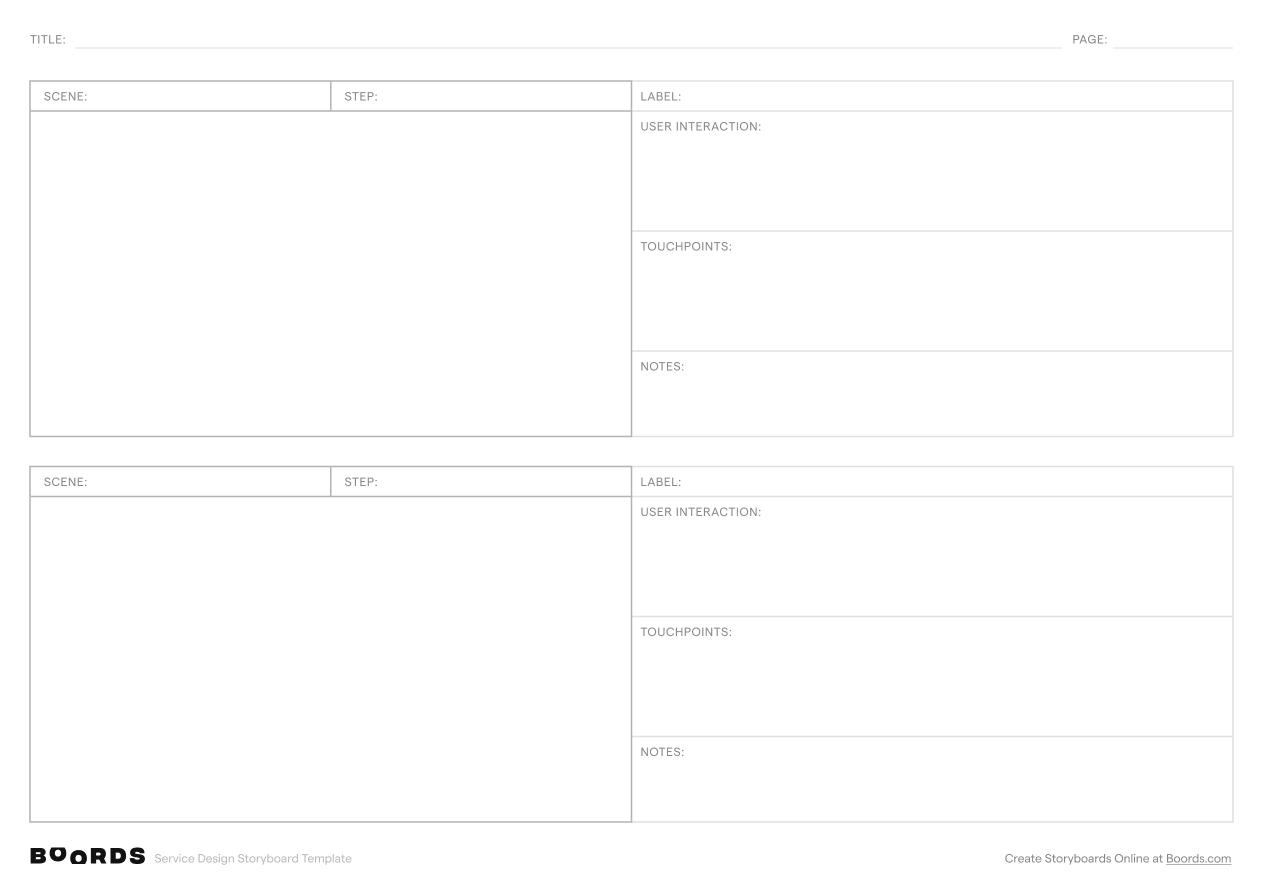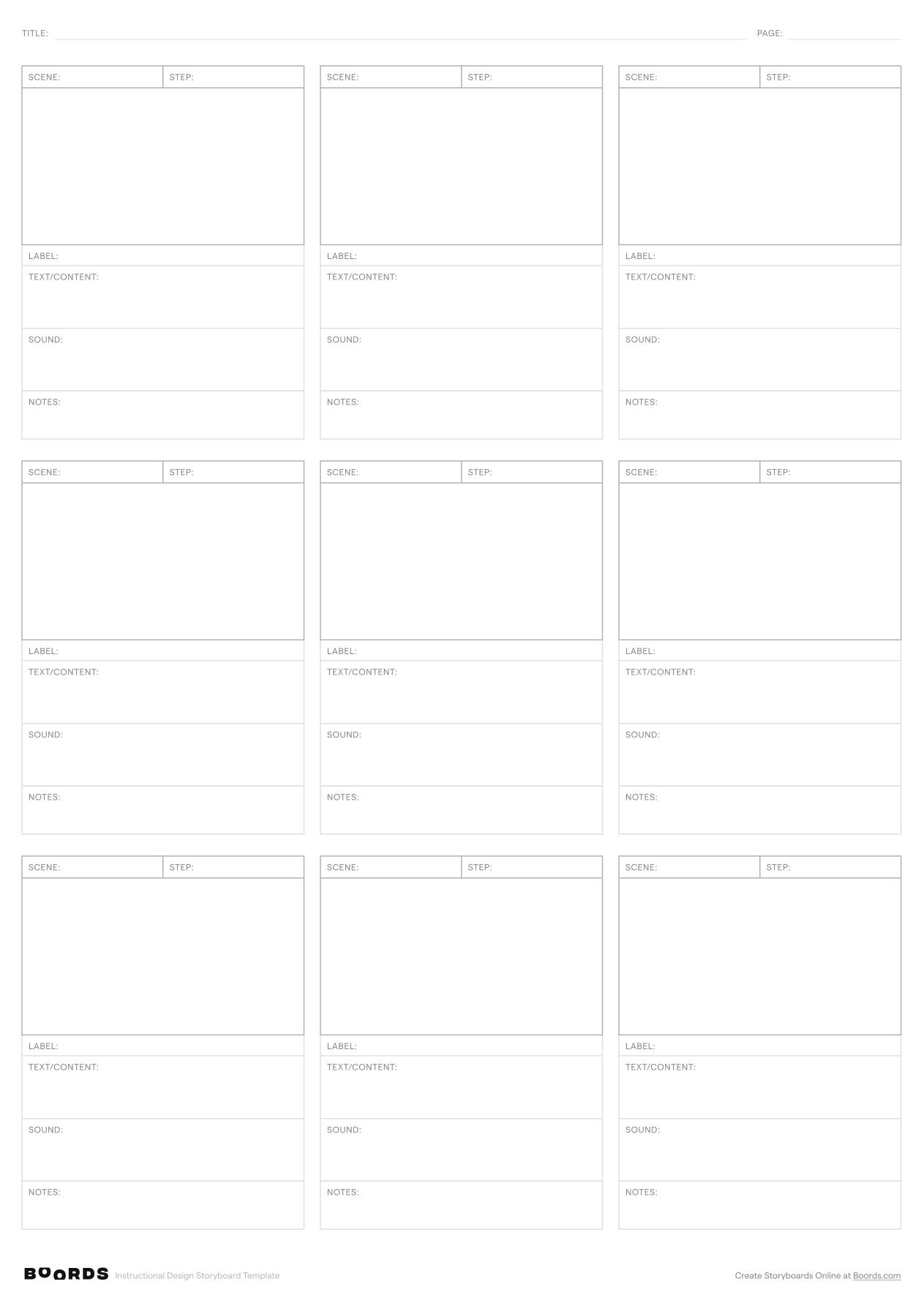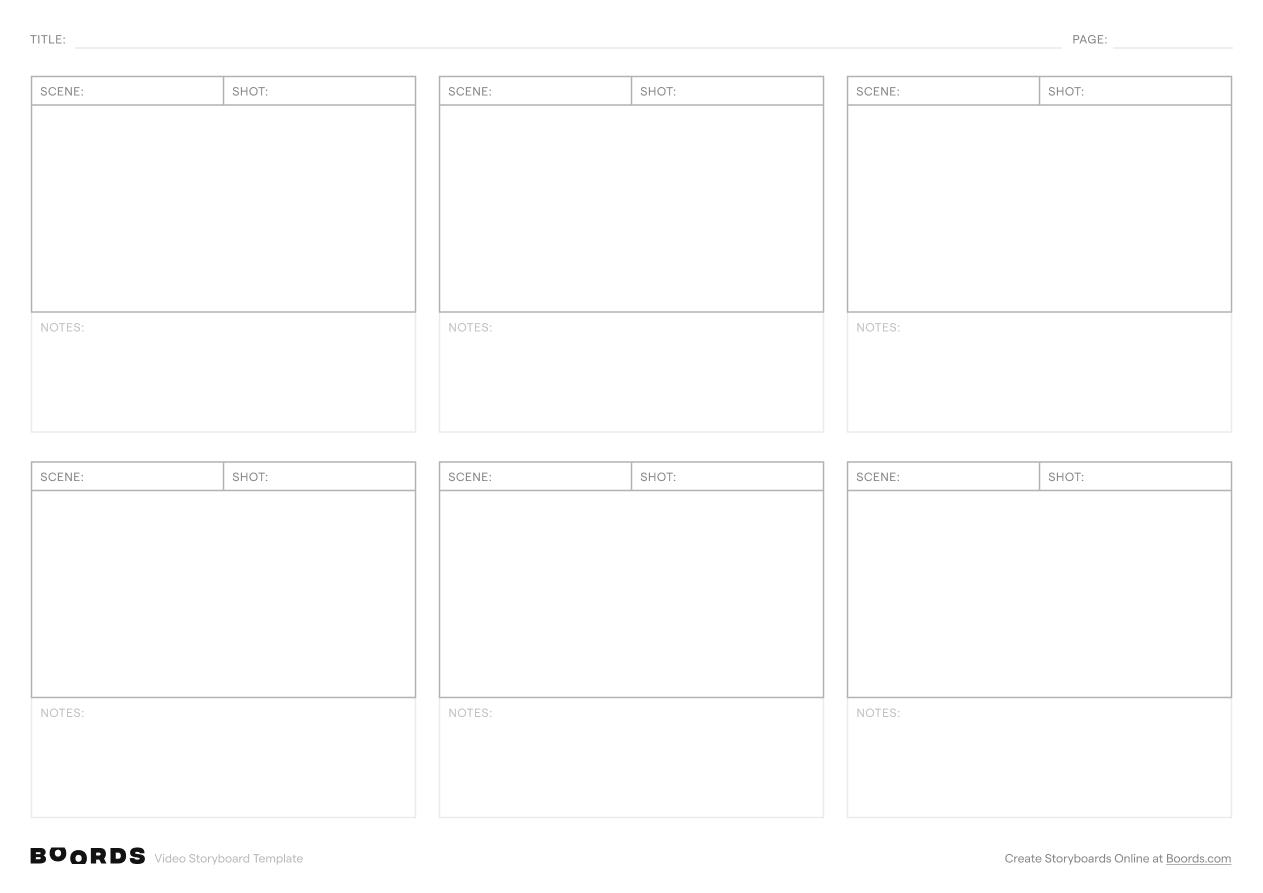Step 1: Fill in the Title and Page Number

In the "TITLE:" field at the top of the template, provide a clear and concise name for your UX project or feature. This title should reflect the main purpose or functionality being designed. If your storyboard spans multiple pages, indicate the current page number in the "PAGE:" field to keep your documents organized.
Step 2: Label the Scenes

In the "SCENE:" column, enter a brief, descriptive label for each distinct user flow or interaction within your UX design. Scenes should represent the main steps or stages a user goes through while interacting with your product or feature. Repeat the scene label for each row associated with that particular scene.
Step 3: Number the Steps

In the "STEP:" column, assign a sequential number to each step within a scene (1, 2, 3...). Steps are the individual actions, screens, or interactions that make up a scene. Numbering the steps helps maintain a logical order and progression throughout your UX storyboard.
Step 4: Provide a Label

In the "LABEL:" field, provide a short, descriptive title or heading for each step. This label should clearly identify the main action, screen, or UI element associated with that step. Keep the labels concise and focused on the key user interactions.
Step 5: Describe the User Action

In the "USER ACTION:" section, outline the specific action or interaction the user performs during each step. This may include tapping a button, filling out a form, navigating to a new screen, or any other user input. Be clear and concise in describing the user's behavior.
Step 6: Add Notes and Details

Use the "NOTES:" section to include any additional comments, explanations, or design considerations related to each step. This space is ideal for noting any specific UI elements, error states, edge cases, or user feedback to be addressed. Collaborate with your team by sharing insights and ideas in this section.
Step 7: Specify Touchpoints

In the "TOUCHPOINTS:" field, list any external systems, APIs, or integrations that are involved or affected by each step in the user flow. This may include database interactions, third-party services, or other touchpoints that need to be considered in the UX design and development process.
Step 8: Review, Iterate, and Implement
Once you have completed the storyboard template for each scene and step, review the entire document to ensure a logical flow and coherent user experience. Look for any gaps, inconsistencies, or areas for improvement. Share the storyboard with your team and stakeholders to gather feedback and iterate on the design. Use the finalized storyboard as a blueprint for implementing and testing your UX design.

